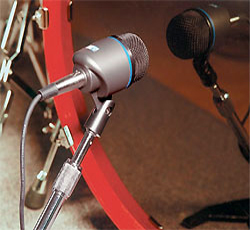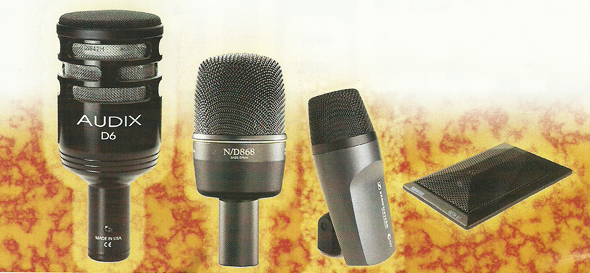Though there are other conventions, it’s generally agreed that the kick drum goes into the first channel of the console, and for time immemorial, inordinate efforts have gone into tediously adjusting it.
Sound check never really starts until after this first input has been tweaked to satisfaction.
The kick drum is the cornerstone of rock. It puts the pop in pop music and is the one input that holds it all together. It’s the heartbeat of rock and roll. With most input channels, the goal is to accurately recreate the original sound, but with kick drum an ideal is constructed from the available material.
Perhaps it’s in channel one because it defines “one.”
First Things First
If you want good sounding drums, the drums must first sound good. Though it sounds like a platitude, sound checks frequently grind to a halt while someone looks for a drum key. Crap drums always provide crap sound (garbage in, garbage out), but the same kit, properly tuned, sounds completely different.
You don’t have to be a drummer to know how to tune drums, though it helps. However, plenty of drum techs are living proof that anyone can learn.
When foldback speakers began battling it out with Marshall stacks and Sunn Coliseums, taking the front head off the kick drum became a necessity to provide a degree of isolation and allow the mic to capture the attack of the beater hitting the head.
The use of a pillow to dampen the head began, no doubt by a sleepy drum tech, and as years went by, the art of the hole in the front head evolved.
There are three ways of setting up a kick drum: with heads on both sides, batter head only, or with a hole in the front head. The latter compromise has become the rule, as it provides access for mic placement, while retaining some benefits of the resonant head, and over time the hole has gotten smaller and moved away from the center.
Countless back-lounge discussions have been logged on this topic. It’s generally agreed that anything larger than 6 inches (a roll of duct tape) releases too much air and performs like no head at all (other than to keep the pillow inside), and a hole in the center also releases too much pressure.
Cutting a hole with a utility knife can have disastrous results and is a job for the skilled or experienced. Heating a coffee can on a stove and pressing it into the head can melt a hole that’s even and smooth.
And in case you were wondering, the 4-o’clock position for an offset hole became traditional because a boom arm reaching across the head causes the weight of the mic to tighten the screw on the mic clip and keep the mic in position.
Batter head tension should be no more than a half-turn past taking the wrinkles out. The front head’s tension affects the batter head, and should be slightly looser for the fullest sound.

















